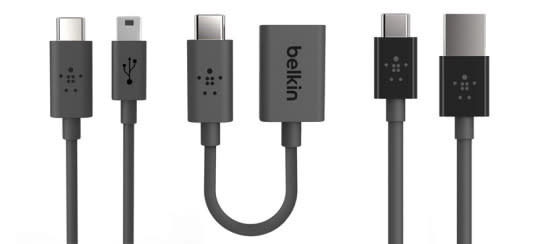Technology of the Year: USB-C
There was plenty of technology unleashed upon the world this year. A ton of pay-with-your-phone systems. Quite a few virtual-reality products. Sense-and-avoid technology in drones.
But one new technology will affect everybody on earth who uses a phone, tablet, laptop, or desktop. A technology that will save us time, money, and frustration. A breakthrough that will even keep tons of e-waste out of the landfills.
I refer, of course, to USB Type C.
Yes, that’s right. The Yahoo Tech Technology of the Year is a jack.
But wow, what a jack. This single, tiny connector can carry power, and video, and audio, and data—simultaneously. In theory, it can, in other words, replace a laptop’s power cord, USB jacks, video output jack, and headphone jack.

And it’s identical top and bottom, so you can’t insert it the wrong way. (I’ll hold here for applause.)
It’s identical end for end, too, so it doesn’t matter which end you grab first.

It feels more secure when you insert it; you get a physical click instead of just relying on friction to hold it.
USB-C has the potential to charge your gadget faster and transfer data faster than what’s come before, too.
It’s tiny—about the size as micro USB—so the same cable can charge your phone and tablet and laptop.
And the brand doesn’t matter. My Samsung USB-C cable can charge your Apple MacBook and his Surface tablet. Can you imagine? You’re witnessing the dawn of the universal charging cord. We can all dump out our drawers full of ugly, mismatched, proprietary charging bricks, long since separated from their original devices, and recycle it all. Now we’ll need only one kind of cable for everything.
The specifications for USB-C were finalized late last year. That’s astonishing for two reasons: First, it was dreamed up by engineers and executives from every major electronics company, working side-by-side for three years—even blood rivals like Apple and Google.
Second, you can already buy phones, tablets, and laptops that come with USB-C jacks—from Apple, Google, Microsoft, Nokia, and others. (You’ll find this jack on Google Nexus phones and tablets, and Chromebook Pixel laptops; Microsoft’s Surface Book laptop and Lumia phones; the OnePlus 2 phone; the Asus ZenPad 8; the Nokia N1; and so on. The upcoming Samsung Galaxy 7 will have USB-C, too.)

One big question: Will Apple have the nerve to replace its Lightning connector (the one on iPhones and iPads) with USB-C, thus completing the earth’s transition to a completely universal charging jack?
That, of course, would infuriate everyone who just got used to Apple’s new Lightning connector. Yet Apple took exactly that risk on its new, 12-inch MacBook laptop, which has USB-C instead of Apple’s traditional magnetic MagSafe power connector. Unfortunately, you get only one USB-C jack; if you want to use power, video, or data simultaneously, you have to buy an $80 splitter.
Change is always annoying. We’re in for a couple of years of transition and fumbling with adapters (like those shown here) that accommodate all our old USB gear: flash drives, hard drives, scanners, printers, cameras, and so on.

But the payoff will be gigantic, convenient, and universal. That should make the pain both mild and brief.
The original USB spec has served us well for 20 years. All hail USB Type C! Let’s meet back here in 2035 to see how quickly it delivered its promise of universal interchangeability across all machines from all brands.
(For an exclusive interview with the leaders of the team created USB Type C, click here.)
David Pogue is the founder of Yahoo Tech; here’s how to get his columns by email. On the Web, he’s davidpogue.com. On Twitter, he’s @pogue. On email, he’s poguester@yahoo.com. He welcomes non-toxic comments in the Comments below.
